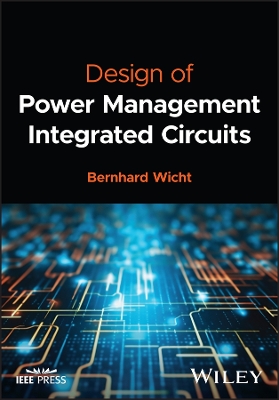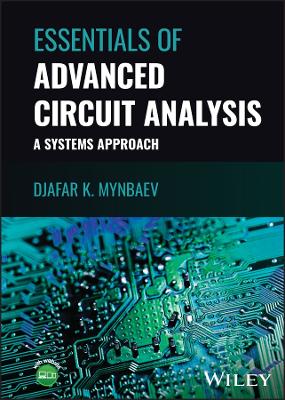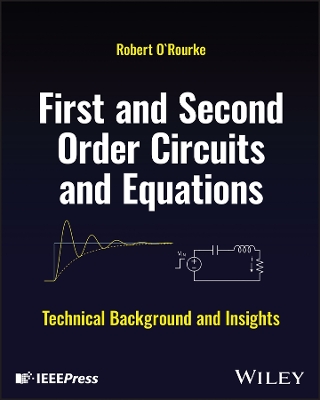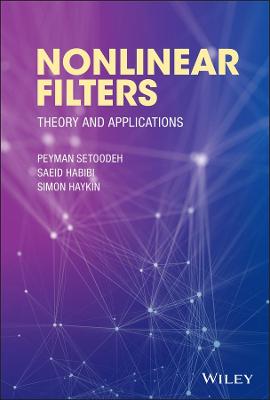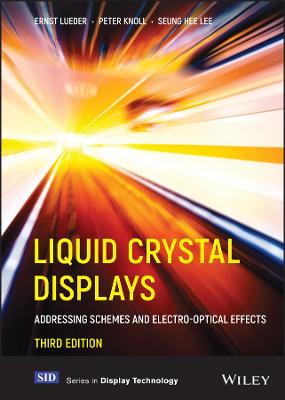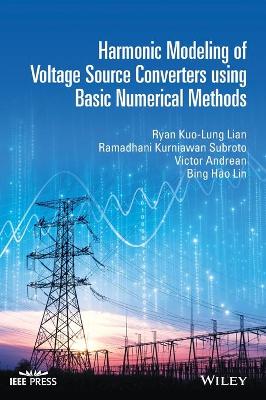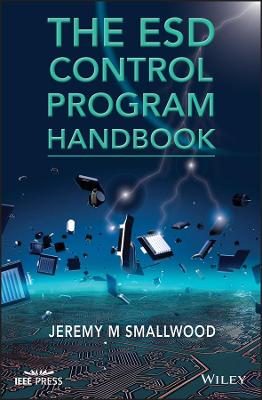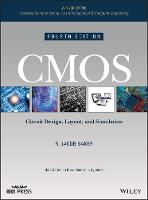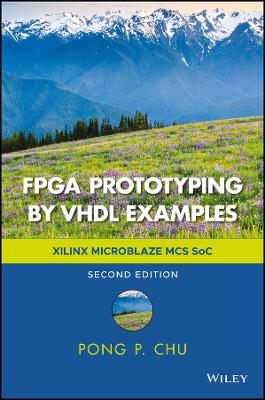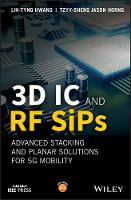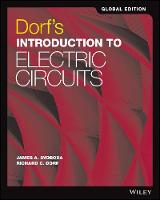Arithmetic Circuits for DSP Applications
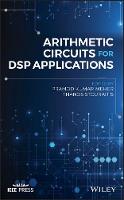 -15%
portes grátis
-15%
portes grátis
Arithmetic Circuits for DSP Applications
Stouraitis, Thanos; Meher, Pramod Kumar
John Wiley & Sons Inc
12/2017
352
Dura
Inglês
9781119206774
15 a 20 dias
586
About the Editors xvii
1 Basic Arithmetic Circuits 1
Oscar Gustafsson and Lars Wanhammar
1.1 Introduction 1
1.2 Addition and Subtraction 1
1.2.1 Ripple-Carry Addition 2
1.2.2 Bit-Serial Addition and Subtraction 3
1.2.3 Digit-Serial Addition and Subtraction 4
1.3 Multiplication 4
1.3.1 Partial Product Generation 5
1.3.2 Avoiding Sign-Extension (the Baugh and Wooley Method) 6
1.3.3 Reducing the Number of Partial Products 6
1.3.4 Reducing the Number of Columns 8
1.3.5 Accumulation Structures 8
1.3.6 Serial/Parallel Multiplication 11
1.4 Sum-of-Products Circuits 15
1.4.1 SOP Computation 17
1.4.2 Linear-Phase FIR Filters 18
1.4.3 Polynomial Evaluation (Horner's Method) 18
1.4.4 Multiple-Wordlength SOP 18
1.5 Squaring 19
1.5.1 Parallel Squarers 19
1.5.2 Serial Squarers 21
1.5.3 Multiplication Through Squaring 23
1.6 Complex Multiplication 24
1.6.1 Complex Multiplication Using Real Multipliers 24
1.6.2 Lifting-Based Complex Multipliers 25
1.7 Special Functions 26
1.7.1 Square Root Computation 26
1.7.2 Polynomial and Piecewise Polynomial Approximations 28
2 Shift-Add Circuits for Constant Multiplications 33
Parmod Kumar Meher, C.-H. Chang, Oscar Gustafsson, A.P. Vinod, and M. Faust
2.1 Introduction 33
2.2 Representation of Constants 36
2.3 Single Constant Multiplication 40
2.3.1 Direct Simplification from a Given Number Representation 40
2.3.2 Simplification by Redundant Signed Digit Representation 41
2.3.3 Simplification by Adder Graph Approach 41
2.3.4 State of the Art in SCM 43
2.4 Algorithms for Multiple Constant Multiplications 43
2.4.1 MCM for FIR Digital Filter and Basic Considerations 43
2.4.2 The Adder Graph Approach 45
2.4.3 Common Subexpression Elimination Algorithms 49
2.4.4 Difference Algorithms 56
2.4.5 Reconfigurable and Time-MultiplexedMultiple Constant Multiplications 56
2.5 Optimization Schemes and Optimal Algorithms 58
2.5.1 Optimal Subexpression Sharing 58
2.5.2 Representation Independent Formulations 60
2.6 Applications 62
2.6.1 Implementation of FIR Digital Filters and Filter Banks 62
2.6.2 Implementation of Sinusoidal and Other Linear Transforms 63
2.6.3 Other Applications 63
2.7 Pitfalls and Scope for Future Work 64
2.7.1 Selection of Figure of Merit 64
2.7.2 Benchmark Suites for Algorithm Evaluation 65
2.7.3 FPGA-Oriented Design of Algorithms and Architectures 65
2.8 Conclusions 66
3 DA-Based Circuits for Inner-Product Computation 77
Mahesh Mehendale, Mohit Sharma, and Pramod Kumar Meher
3.1 Introduction 77
3.2 Mathematical Foundation and Concepts 78
3.3 Techniques for Area Optimization of DA-Based Implementations 81
3.3.1 Offset Binary Coding 81
3.3.2 Adder-Based DA 85
3.3.3 Coefficient Partitioning 85
3.3.4 Exploiting Coefficient Symmetry 87
3.3.5 LUT Implementation Optimization 88
3.3.6 Adder-Based DA Implementation with Single Adder 90
3.3.7 LUT Optimization for Fixed Coefficients 90
3.3.8 Inner-Product with Data and Coefficients Represented as Complex Numbers 92
3.4 Techniques for Performance Optimization of DA-Based Implementations 93
3.4.1 Two-Bits-at-a-Time (2-BAAT) Access 93
3.4.2 Coefficient Distribution over Data 93
3.4.3 RNS-Based Implementation 95
3.5 Techniques for Low Power and Reconfigurable Realization of DA-Based Implementations 98
3.5.1 Adder-Based DA with Fixed Coefficients 99
3.5.2 Eliminating Redundant LUT Accesses and Additions 100
3.5.3 Using Zero-Detection to Reduce LUT Accesses and Additions 102
3.5.4 Nega-Binary Coding for Reducing Input Toggles and LUT Look-Ups 103
3.5.5 Accuracy versus Power Tradeoff 107
3.5.6 Reconfigurable DA-Based Implementations 108
3.6 Conclusion 108
4 Table-Based Circuits for DSP Applications 113
Pramod Kumar Meher and Shen-Fu Hsiao
4.1 Introduction 113
4.2 LUT Design for Implementation of Boolean Function 115
4.3 Lookup Table Design for Constant Multiplication 117
4.3.1 Lookup Table Optimizations for Constant Multiplication 117
4.3.2 Implementation of LUT-Multiplier using APC for L = 5 122
4.3.3 Implementation of Optimized LUT using OMS Technique 123
4.3.4 Optimized LUT Design for Signed and Unsigned Operands 124
4.3.5 Input Operand Decomposition for Large InputWidth 126
4.4 Evaluation of Elementary Arithmetic Functions 127
4.4.1 Piecewise Polynomial Approximation (PPA) Approach for Function Evaluation 128
4.4.2 Table-Addition (TA) Approach for Function Evaluation 131
4.5 Applications 134
4.5.1 LUT-Based Implementation of Cyclic Convolution and Orthogonal Transforms 135
4.5.2 LUT-Based Evaluation of Reciprocals and Division Operation 136
4.5.3 LUT-Based Design for Evaluation of Sigmoid Function 138
4.6 Summary 143
5 CORDIC Circuits 149
Pramod Kumar Meher, Javier Valls, Tso-Bing Juang, K. Sridharan, and Koushik Maharatna
5.1 Introduction 149
5.2 Basic CORDIC Techniques 151
5.2.1 The CORDIC Algorithm 151
5.2.2 Generalization of the CORDIC Algorithm 154
5.2.3 Multidimensional CORDIC 155
5.3 Advanced CORDIC Algorithms and Architectures 156
5.3.1 High-Radix CORDIC Algorithm 157
5.3.2 Angle Recoding Methods 158
5.3.3 Hybrid or Coarse-Fine Rotation CORDIC 161
5.3.4 Redundant Number-Based CORDIC Implementation 164
5.3.5 Pipelined CORDIC Architecture 166
5.3.6 Differential CORDIC Algorithm 167
5.4 Scaling, Quantization, and Accuracy Issues 168
5.4.1 Implementation of Mixed-Scaling Rotation 168
5.4.2 Low-Complexity Scaling 169
5.4.3 Quantization and Numerical Accuracy 170
5.4.4 Area-Delay-Accuracy Trade-off 170
5.5 Applications of CORDIC 172
5.5.1 Matrix Computation 172
5.5.2 Signal Processing and Image Processing Applications 173
5.5.3 Applications to Communication 174
5.5.4 Applications of CORDIC to Robotics and Graphics 176
5.6 Conclusions 178
6 RNS-Based Arithmetic Circuits and Applications 186
P.V. Ananda Mohan
6.1 Introduction 186
6.2 Modulo Addition and Subtraction 189
6.2.1 Modulo (2n? 1) Adders 189
6.2.2 Modulo (2n + 1) Adders 191
6.3 Modulo Multiplication and Modulo Squaring 193
6.3.1 Multipliers for General Moduli 194
6.3.2 Multipliers mod (2n ? 1) 195
6.3.3 Multipliers mod (2n + 1) 196
6.3.4 Modulo Squarers 199
6.4 Forward (binary to RNS) Conversion 200
6.5 RNS to Binary Conversion 203
6.5.1 CRT-Based RNS to Binary Conversion 203
6.5.2 Mixed Radix Conversion 206
6.5.3 RNS to Binary conversion using New CRT 207
6.5.4 RNS to Binary conversion using Core Function 208
6.6 Scaling and Base Extension 210
6.7 Magnitude Comparison and Sign Detection 213
6.8 Error Correction and Detection 214
6.9 Applications of RNS 216
6.9.1 FIR Filters 216
6.9.2 RNS in Cryptography 218
6.9.3 RNS in Digital Communication Systems 225
7 Logarithmic Number System 237
Vassilis Paliouras and Thanos Stouraitis
7.1 Introduction 237
7.1.1 The Logarithmic Number System 237
7.1.2 Organization of the Chapter 237
7.2 Basics of LNS Representation 238
7.2.1 LNS and Equivalence to Linear Representation 238
7.3 Fundamental Arithmetic Operations 240
7.3.1 Multiplication, Division, Roots, and Powers 240
7.3.2 Addition and Subtraction 241
7.4 Forward and Inverse Conversion 249
7.5 Complex Arithmetic in LNS 250
7.6 LNS Processors 251
7.6.1 A VLIW LNS Processor 252
7.7 LNS for Low-Power Dissipation 257
7.7.1 Impact of LNS Encoding on Signal Activity 258
7.7.2 Power Dissipation and LNS Architecture 261
7.8 Applications 265
7.8.1 Signal Processing and Communications 265
7.8.2 Video Processing 267
7.8.3 Graphics 268
7.9 Conclusions 268
8 Redundant Number System-Based Arithmetic Circuits 273
G. Jaberipur
8.1 Introduction 273
8.1.1 Introductory Definitions and Examples 274
8.2 Fundamentals of Redundant Number Systems 278
8.2.1 Redundant Digit Sets 278
8.3 Redundant Number Systems 280
8.3.1 Constant Time Addition 281
8.3.2 Carry-Save Addition 283
8.3.3 Borrow Free Subtraction 285
8.4 Basic Arithmetic Circuits for Redundant Number Systems 287
8.4.1 Circuit Realization of Carry-Free Adders 287
8.4.2 Fast Maximally Redundant Carry-Free Adders 288
8.4.3 Carry-Free Addition of Symmetric Maximally Redundant Numbers 290
8.4.4 Addition and Subtraction of Stored-Carry Encoded Redundant Operands 292
8.5 Binary to Redundant Conversion and the Reverse 297
8.5.1 Binary to MRSD Conversion and the Reverse 297
8.5.2 Binary to Stored Unibit Conversion and the Reverse 298
8.6 Special Arithmetic Circuits for Redundant Number Systems 299
8.6.1 Radix-2h MRSD Arithmetic Shifts 299
8.6.2 Stored Unibit Arithmetic Shifts 300
8.6.3 Apparent Overflow 303
8.7 Applications 303
8.7.1 Redundant Representation of Partial Products 305
8.7.2 Recoding the Multiplier to a Redundant Representation 305
8.7.3 Use of Redundant Number Systems in Digit Recurrence Algorithms 306
8.7.4 Transcendental Functions and Redundant Number Systems 306
8.7.5 RDNS and Fused Multiply-Add Operation 307
8.7.6 RDNS and Floating Point Arithmetic 307
8.7.7 RDNS and RNS Arithmetic 308
8.8 Summary and Further Reading 308
Index 313
About the Editors xvii
1 Basic Arithmetic Circuits 1
Oscar Gustafsson and Lars Wanhammar
1.1 Introduction 1
1.2 Addition and Subtraction 1
1.2.1 Ripple-Carry Addition 2
1.2.2 Bit-Serial Addition and Subtraction 3
1.2.3 Digit-Serial Addition and Subtraction 4
1.3 Multiplication 4
1.3.1 Partial Product Generation 5
1.3.2 Avoiding Sign-Extension (the Baugh and Wooley Method) 6
1.3.3 Reducing the Number of Partial Products 6
1.3.4 Reducing the Number of Columns 8
1.3.5 Accumulation Structures 8
1.3.6 Serial/Parallel Multiplication 11
1.4 Sum-of-Products Circuits 15
1.4.1 SOP Computation 17
1.4.2 Linear-Phase FIR Filters 18
1.4.3 Polynomial Evaluation (Horner's Method) 18
1.4.4 Multiple-Wordlength SOP 18
1.5 Squaring 19
1.5.1 Parallel Squarers 19
1.5.2 Serial Squarers 21
1.5.3 Multiplication Through Squaring 23
1.6 Complex Multiplication 24
1.6.1 Complex Multiplication Using Real Multipliers 24
1.6.2 Lifting-Based Complex Multipliers 25
1.7 Special Functions 26
1.7.1 Square Root Computation 26
1.7.2 Polynomial and Piecewise Polynomial Approximations 28
2 Shift-Add Circuits for Constant Multiplications 33
Parmod Kumar Meher, C.-H. Chang, Oscar Gustafsson, A.P. Vinod, and M. Faust
2.1 Introduction 33
2.2 Representation of Constants 36
2.3 Single Constant Multiplication 40
2.3.1 Direct Simplification from a Given Number Representation 40
2.3.2 Simplification by Redundant Signed Digit Representation 41
2.3.3 Simplification by Adder Graph Approach 41
2.3.4 State of the Art in SCM 43
2.4 Algorithms for Multiple Constant Multiplications 43
2.4.1 MCM for FIR Digital Filter and Basic Considerations 43
2.4.2 The Adder Graph Approach 45
2.4.3 Common Subexpression Elimination Algorithms 49
2.4.4 Difference Algorithms 56
2.4.5 Reconfigurable and Time-MultiplexedMultiple Constant Multiplications 56
2.5 Optimization Schemes and Optimal Algorithms 58
2.5.1 Optimal Subexpression Sharing 58
2.5.2 Representation Independent Formulations 60
2.6 Applications 62
2.6.1 Implementation of FIR Digital Filters and Filter Banks 62
2.6.2 Implementation of Sinusoidal and Other Linear Transforms 63
2.6.3 Other Applications 63
2.7 Pitfalls and Scope for Future Work 64
2.7.1 Selection of Figure of Merit 64
2.7.2 Benchmark Suites for Algorithm Evaluation 65
2.7.3 FPGA-Oriented Design of Algorithms and Architectures 65
2.8 Conclusions 66
3 DA-Based Circuits for Inner-Product Computation 77
Mahesh Mehendale, Mohit Sharma, and Pramod Kumar Meher
3.1 Introduction 77
3.2 Mathematical Foundation and Concepts 78
3.3 Techniques for Area Optimization of DA-Based Implementations 81
3.3.1 Offset Binary Coding 81
3.3.2 Adder-Based DA 85
3.3.3 Coefficient Partitioning 85
3.3.4 Exploiting Coefficient Symmetry 87
3.3.5 LUT Implementation Optimization 88
3.3.6 Adder-Based DA Implementation with Single Adder 90
3.3.7 LUT Optimization for Fixed Coefficients 90
3.3.8 Inner-Product with Data and Coefficients Represented as Complex Numbers 92
3.4 Techniques for Performance Optimization of DA-Based Implementations 93
3.4.1 Two-Bits-at-a-Time (2-BAAT) Access 93
3.4.2 Coefficient Distribution over Data 93
3.4.3 RNS-Based Implementation 95
3.5 Techniques for Low Power and Reconfigurable Realization of DA-Based Implementations 98
3.5.1 Adder-Based DA with Fixed Coefficients 99
3.5.2 Eliminating Redundant LUT Accesses and Additions 100
3.5.3 Using Zero-Detection to Reduce LUT Accesses and Additions 102
3.5.4 Nega-Binary Coding for Reducing Input Toggles and LUT Look-Ups 103
3.5.5 Accuracy versus Power Tradeoff 107
3.5.6 Reconfigurable DA-Based Implementations 108
3.6 Conclusion 108
4 Table-Based Circuits for DSP Applications 113
Pramod Kumar Meher and Shen-Fu Hsiao
4.1 Introduction 113
4.2 LUT Design for Implementation of Boolean Function 115
4.3 Lookup Table Design for Constant Multiplication 117
4.3.1 Lookup Table Optimizations for Constant Multiplication 117
4.3.2 Implementation of LUT-Multiplier using APC for L = 5 122
4.3.3 Implementation of Optimized LUT using OMS Technique 123
4.3.4 Optimized LUT Design for Signed and Unsigned Operands 124
4.3.5 Input Operand Decomposition for Large InputWidth 126
4.4 Evaluation of Elementary Arithmetic Functions 127
4.4.1 Piecewise Polynomial Approximation (PPA) Approach for Function Evaluation 128
4.4.2 Table-Addition (TA) Approach for Function Evaluation 131
4.5 Applications 134
4.5.1 LUT-Based Implementation of Cyclic Convolution and Orthogonal Transforms 135
4.5.2 LUT-Based Evaluation of Reciprocals and Division Operation 136
4.5.3 LUT-Based Design for Evaluation of Sigmoid Function 138
4.6 Summary 143
5 CORDIC Circuits 149
Pramod Kumar Meher, Javier Valls, Tso-Bing Juang, K. Sridharan, and Koushik Maharatna
5.1 Introduction 149
5.2 Basic CORDIC Techniques 151
5.2.1 The CORDIC Algorithm 151
5.2.2 Generalization of the CORDIC Algorithm 154
5.2.3 Multidimensional CORDIC 155
5.3 Advanced CORDIC Algorithms and Architectures 156
5.3.1 High-Radix CORDIC Algorithm 157
5.3.2 Angle Recoding Methods 158
5.3.3 Hybrid or Coarse-Fine Rotation CORDIC 161
5.3.4 Redundant Number-Based CORDIC Implementation 164
5.3.5 Pipelined CORDIC Architecture 166
5.3.6 Differential CORDIC Algorithm 167
5.4 Scaling, Quantization, and Accuracy Issues 168
5.4.1 Implementation of Mixed-Scaling Rotation 168
5.4.2 Low-Complexity Scaling 169
5.4.3 Quantization and Numerical Accuracy 170
5.4.4 Area-Delay-Accuracy Trade-off 170
5.5 Applications of CORDIC 172
5.5.1 Matrix Computation 172
5.5.2 Signal Processing and Image Processing Applications 173
5.5.3 Applications to Communication 174
5.5.4 Applications of CORDIC to Robotics and Graphics 176
5.6 Conclusions 178
6 RNS-Based Arithmetic Circuits and Applications 186
P.V. Ananda Mohan
6.1 Introduction 186
6.2 Modulo Addition and Subtraction 189
6.2.1 Modulo (2n? 1) Adders 189
6.2.2 Modulo (2n + 1) Adders 191
6.3 Modulo Multiplication and Modulo Squaring 193
6.3.1 Multipliers for General Moduli 194
6.3.2 Multipliers mod (2n ? 1) 195
6.3.3 Multipliers mod (2n + 1) 196
6.3.4 Modulo Squarers 199
6.4 Forward (binary to RNS) Conversion 200
6.5 RNS to Binary Conversion 203
6.5.1 CRT-Based RNS to Binary Conversion 203
6.5.2 Mixed Radix Conversion 206
6.5.3 RNS to Binary conversion using New CRT 207
6.5.4 RNS to Binary conversion using Core Function 208
6.6 Scaling and Base Extension 210
6.7 Magnitude Comparison and Sign Detection 213
6.8 Error Correction and Detection 214
6.9 Applications of RNS 216
6.9.1 FIR Filters 216
6.9.2 RNS in Cryptography 218
6.9.3 RNS in Digital Communication Systems 225
7 Logarithmic Number System 237
Vassilis Paliouras and Thanos Stouraitis
7.1 Introduction 237
7.1.1 The Logarithmic Number System 237
7.1.2 Organization of the Chapter 237
7.2 Basics of LNS Representation 238
7.2.1 LNS and Equivalence to Linear Representation 238
7.3 Fundamental Arithmetic Operations 240
7.3.1 Multiplication, Division, Roots, and Powers 240
7.3.2 Addition and Subtraction 241
7.4 Forward and Inverse Conversion 249
7.5 Complex Arithmetic in LNS 250
7.6 LNS Processors 251
7.6.1 A VLIW LNS Processor 252
7.7 LNS for Low-Power Dissipation 257
7.7.1 Impact of LNS Encoding on Signal Activity 258
7.7.2 Power Dissipation and LNS Architecture 261
7.8 Applications 265
7.8.1 Signal Processing and Communications 265
7.8.2 Video Processing 267
7.8.3 Graphics 268
7.9 Conclusions 268
8 Redundant Number System-Based Arithmetic Circuits 273
G. Jaberipur
8.1 Introduction 273
8.1.1 Introductory Definitions and Examples 274
8.2 Fundamentals of Redundant Number Systems 278
8.2.1 Redundant Digit Sets 278
8.3 Redundant Number Systems 280
8.3.1 Constant Time Addition 281
8.3.2 Carry-Save Addition 283
8.3.3 Borrow Free Subtraction 285
8.4 Basic Arithmetic Circuits for Redundant Number Systems 287
8.4.1 Circuit Realization of Carry-Free Adders 287
8.4.2 Fast Maximally Redundant Carry-Free Adders 288
8.4.3 Carry-Free Addition of Symmetric Maximally Redundant Numbers 290
8.4.4 Addition and Subtraction of Stored-Carry Encoded Redundant Operands 292
8.5 Binary to Redundant Conversion and the Reverse 297
8.5.1 Binary to MRSD Conversion and the Reverse 297
8.5.2 Binary to Stored Unibit Conversion and the Reverse 298
8.6 Special Arithmetic Circuits for Redundant Number Systems 299
8.6.1 Radix-2h MRSD Arithmetic Shifts 299
8.6.2 Stored Unibit Arithmetic Shifts 300
8.6.3 Apparent Overflow 303
8.7 Applications 303
8.7.1 Redundant Representation of Partial Products 305
8.7.2 Recoding the Multiplier to a Redundant Representation 305
8.7.3 Use of Redundant Number Systems in Digit Recurrence Algorithms 306
8.7.4 Transcendental Functions and Redundant Number Systems 306
8.7.5 RDNS and Fused Multiply-Add Operation 307
8.7.6 RDNS and Floating Point Arithmetic 307
8.7.7 RDNS and RNS Arithmetic 308
8.8 Summary and Further Reading 308
Index 313

